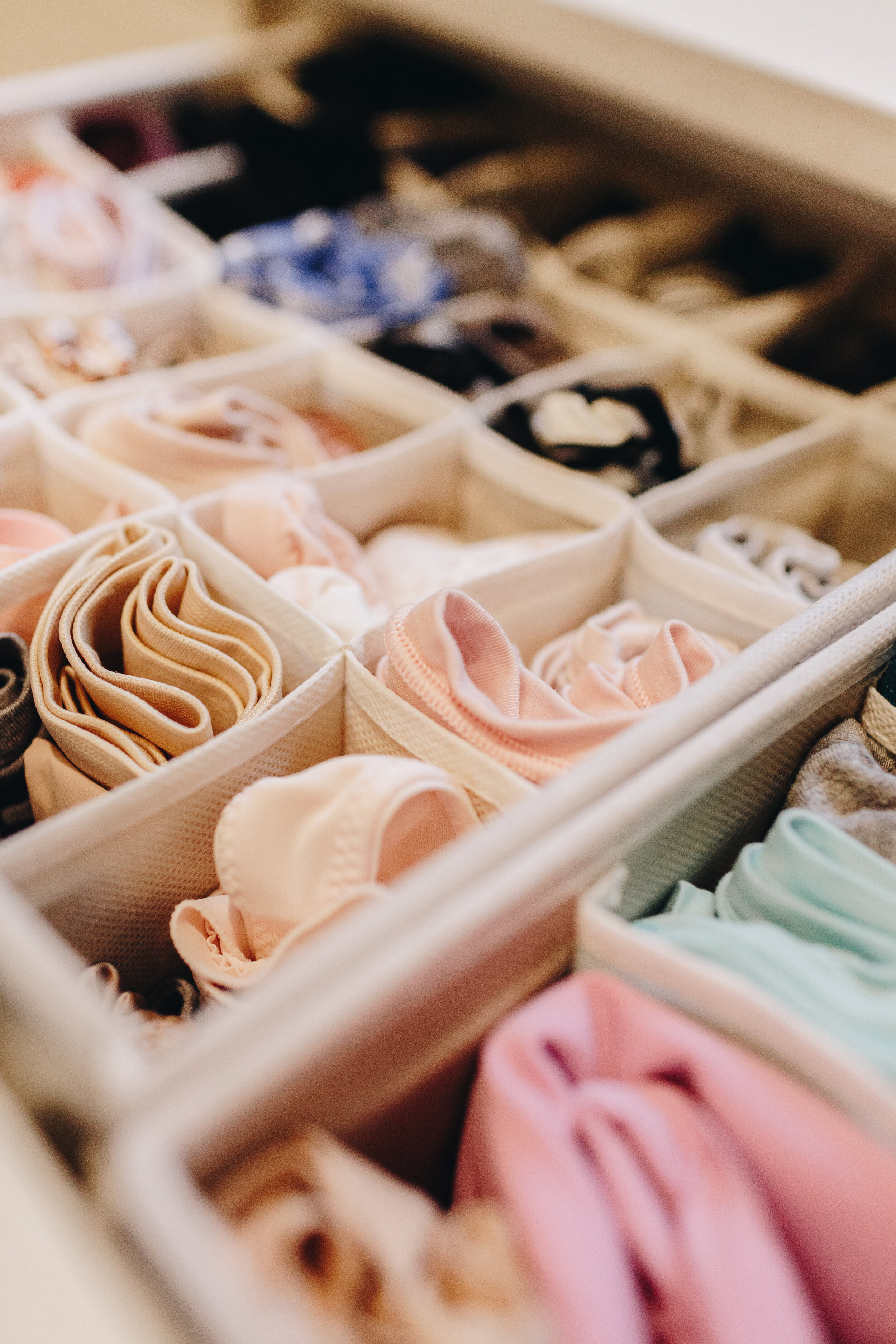5 Questions with… a KonMari Expert
January 25, 2021

Tomoka Brabham, KonMari expert and founder of A Tidy Transformation
Welcome to 5 Questions!
In this feature, you’ll get—you guessed it—five questions and answers from an expert on the week’s topic.
This week is all about living with less, so there’s no better way to kick off this week than a good info download from a KonMari expert whose job it is to teach people how to minimize and organize.
If you missed my other posts with Tomoka and want a deeper dive on how she helped me conquer my clutter, scroll to the end for some more KonMari posts. In the meantime, let’s do this!

My closet after working with Tomoka. For the rest of the reveal, click here!
1
I’ve already seen the magic you can work on spaces, but tell everyone who’s not familiar with the KonMari Method what makes it so special, and why you were drawn to practice it.
The KonMari Method™ is different from most professional organizing services in two aspects. First, I teach organizing by category, not location. Second, it is much more about identifying and holding on to what people love than about getting rid of things or working towards a minimalist lifestyle. I enjoy helping the clients go through this re-discovery of the true happiness in their belongings – it really is to find out the authentic self by facing the past and present, because I believe the tangible items you own and how you care for them also implicate who you are.
2
Tell me something cool about being born and raised in Japan!
Japan is a country made up of small islands, surrounded by the nature – mountains, rivers, and the oceans. In my childhood, I adored a variety of scenery, traditional events, and culture that changed its views and flavors season by season.
From the cherry blossom time in late March to early April, going out in a “yukata”(a casual cotton kimono) for a summer festival, “tsukimi” (moon-viewing) to celebrate the full moon with homemade Japanese sweet dumplings called “dango” in September, an year-end cleaning in December to be ready for the New Year, having “toshikoshi-soba” (year-crossing noodle) on New Year’s Eve, and “o-zoni” and “osechi” (New Year special dishes) on New Year’s Day.

Underwear organizers for the win!
3
What’s something we can all do to start buying less?
A shift in our conception might play a major role. I think it is a normal behavior for a human to want brand-new products and more. As the anticipation of acquiring a new item increases, dopamine, a reward system hormone in our brain, also increases.
Rather than the act of shopping itself, dopamine might be more active before buying, when people are researching on the items and excited about getting them in the near future. It’s a very common phenomenon regardless of the age – a child requests for a toy, and when s/he receives it, plays with it for a day or two (or only for few minutes!) and s/he can easily lose interest and moves on to the next object.
Knowing such tendency of human behavior, it is a good practice to ask ourselves whether our motivation to buy any certain item is driven by needs and wants that are truly meaningful and “spark joy” to our lives. Can we use any existing items we already possess, instead of getting a new one?
You might be surprised how you can be so creative to mix and match the existing items to serve different purposes. Bonus: your dopamine may be released during the decluttering process and quite frequently, the clients discover money and gift cards they have forgotten about during the session.
4
Give us your best mom hack—anything you do with your two sweet boys that helps them stay organized, calm and otherwise happy these days?
I teach them the KonMari Method™ of tidying up and the special KonMari cloth folding techniques. They have a copy of The Life-Changing Manga of Tidying Up: A Magical Story, which is a graphic novelization of Marie Kondo’s bestseller The Life-Changing Magic of Tidying Up. It is easier for children to follow the comics that teach practical lessons.
I respect my boys’ belongings as theirs, so I try to have them be involved in the decision-making process whether they keep certain item or not. When they determine to let go of things, I teach them where these items will go next, such as a local donation center, and ask them to say “thank you” to the items that have served them well while they have been a part of the boys’ lives.

Tidiness, achieved! The sock organizers that Tomoka used in my closet have been amazing at keeping my drawer spaces clean and accessible. Find them here.
5
We’re all dreaming about traveling again. Tell anyone who wants to go to Japan three things they must do when they go.
According to my older son, “eat cream puffs!” Yes, Japan does have best cream puffs… from 7-Eleven. [Editor’s note: Holy moly!]
Believe or not, convenience stores in Japan might provide uniquely fun and amazing experience to foreign travelers. From rice balls, bento boxes, hot meals, self-care essentials, books and magazines, concert tickets, shipping items, copying and printing, banking needs, the list goes on and on. Japanese “konbini” (convenience stores) is remarkably advanced, a condensed version of multiple stores and functions. Inside the store is meticulously clean and organized, and the store staff is polite and nice.
For places to visit, it is difficult for me to choose just three! There are so many destinations I can recommend, but if you have only a limited time to stay in the central Tokyo area, here are the three I would pick:
1. Meiji Jingu (Shrine): a Shinto shrine near Harajuku station in Tokyo, dedicated to the deified spirits of Emperor Meiji and his wife, Empress Shoken. The area of 170 acres covered by an evergreen forest and the traditional architecture, is a vivid contrast as compared to the modern, urban living of cosmopolitan Tokyo.
2. Asakusa: a district in Tokyo, famous for the Senso-ji, a Buddhist temple and various festivals.
3. Shibuya Scramble Crossing: one of the busiest streets in Japan! Be prepared not to bump into anybody when crossing.
If you have an extra time to explore, the Tokyo Imperial Palace in the heart of Tokyo is magnificent. Hakone (known for hot springs and a view of Mt. Fuji) and Kamakura (the former capital of Japan during the Kamakura period from late 12th to early 14th century) are also not too far from Tokyo. Kyoto, the former imperial court of Japan until late 19th century, about 140 minutes away from Tokyo by a bullet train, offers rich and traditional cultural and historical experiences to the tourists.
More Helpful Articles on Tidying Up and Minimizing
For all the past articles on minimizing, decluttering and the KonMari Method I’ve find, simply click here!
© 2022 WGT Designed by leche studio
PRIVACY & TERMS
CONNECT
NAVIGATE
Home
Blog
Work With Me
More From Us
Want to be the first to get the latest updates and news?
About
Podcast
Contact